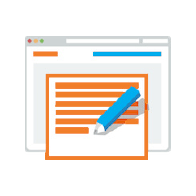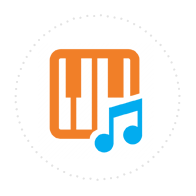Musika Quick Stats
24 Years
Since We Started
41,456+
Happy Customers
10,769
Cities with Students
3,123
Teachers in Network
Lesson Special - Up to 20% OFF! Get Started Now with a Risk-Free Trial!
Here are just a few of the many teachers offering Violin lessons in Austin . Whether you are looking for beginner guitar lessons for your kids, or are an adult wanting to improve your skills, the instructors in our network are ready to help you now!
Instruments: Violin Viola
I strongly encourage the student and parent to be methodic and consciensious about learning the basic technique for the instrument before he/she starts to play differnt repertoire. Nevertheless I try to introduce simple tunes and songs to encourage the student to progress rapidly and get a love for the instrument. Read More
Instruments: Violin Viola
My teaching experience dates back to my college days, as I began teaching private violin and viola lessons part time ten years ago. I teach students in my home but also dont mind coming to them as this can be more convenient for busy schedules! I teach beginner to intermediate levels for violin and all levels beginner to advanced for viola. I love to combine classical and modern music when teaching students. Read More
Instruments: Violin
I am a passionate teacher who likes to have fun in lessons! My main goal as a teacher is to inspire my students to be the best they can be. I have found that the teachers that inspire me the most are the ones that I can laugh with or ask questions without the feeling of being talked down to. I want my students to ask musical questions and search for answers so that we can have active musical dialogue in our lessons. Read More
Instruments: Piano Guitar Voice Violin Saxophone Clarinet Drums Bass Guitar Synthesizer Keyboard Electric Guitar Classical Guitar Acoustic Guitar
Darrell worked at the primary, secondary/preparatory, and tertiary levels at some of the top-rated private schools in New York, conducting and directing since 1986. He has been a professional producer, director, performer and private instructor/mentor in Austin, Texas since 2009. Performing since 1980, Darrell has worked with all levels of musicians, from beginners to professionals in a wide variety of genres in many facets of music production, from center stage to backstage and in the recording studio. Read More
Instruments: Piano Guitar Violin Viola Ukulele Fiddle Classical Guitar Acoustic Guitar
For violin I usually use Suzuki Method and will introduce etudes like Wohlfahrt or Kreutzer. I also have fun with Christmas music, pop and fiddle. If they are young children aged 4-6, I will use the "I Can Read Music" by Joanne Martin. For guitar I use a variety of different classical method and etude books. In addition, I will introduce different genres according to what each student wants to learn, for example, rock, pop, worship, etc. Read More
Instruments: Guitar Violin Saxophone Bass Guitar Banjo Ukulele Mandolin Electric Violin Fiddle
Around this time, I also began taking students for private lessons on violin, guitar, mandolin, banjo and all the other various things I play. In both the bigger theory classes and my one-on-one lessons, I really encourage students to work on material that they enjoy and to relate their studies to the things that they're passionate about. I want to ensure that my students are as excited about music as I am! Read More
Instruments: Piano Guitar Voice Violin Bass Guitar Ukulele Electric Violin Fiddle Keyboard Electric Guitar Acoustic Guitar
I always tailor my lessons to my students needs and desires and never waste time. Nothing is more important than a students progress and growth so I weed out all the irrelevant or potentially boring information in music lessons and cut straight to the chase of what is going to help the student learn and enjoy their progress. I encourage consistent feedback and communication so that I may know I am succeeding in navigating the students musical experience. Read More
Instruments: Piano Violin Trumpet Trombone Saxophone Flute Clarinet Drums Synthesizer Recorder Electric Violin Fiddle Orchestral Percussion Music Keyboard
Do you use specific teaching methods or books? (Ex: Alfred, Bastion, Suzuki, Hal Leonard) Why did you choose them if you did?
Depending on the instrument, I refer to a variety of methods books and other sources...no one book is going to provide you with a 'comprehensive' approach to all things on your instrument--that's what lessons are for! Years ago, I went through book level 1 (beginner), level 2 (intermediate), and level 3 (advanced) from different publishers and for each book and for each level of that book, I compiled (in chronological order) numerous excerpts and put them into Finale software. By doing so, I'm then able to format their appearance however I prefer (e.g., AlphaNotes, beat numbers or sticking for drummers as 'lyrics' under each note, enlarged staff and note size as well as increased spacing between staves and number of systems on each page; special fonts, etc.) I then can quickly transpose to any other instrument, save, print, or e-mail, etc. I prefer not to copy pages out of books!
I started on the Ed Sueta Band Methods books myself (ca, 1990-1992), and when I first started teaching in NJ everyone was using Bruce Pearson's Standard of Excellence books; here in TX everyone uses Essential Elements. They all have similar songs in a logical order, only the layout is different. I sometimes pull from Rubank or Premier Performance. For violin, I recommend All For Strings (and get the accompanying theory workbook, too). For piano, I mostly use Keys to Successful Piano Performance (by William Workinger and Ed Sueta). For drums, I also use: Stick Control for the Snare Drummer, Progressive Steps to Syncopation (by Ted Reed), and Joel Rothman's Mini-Monster Book of Rock Drumming.
FYI: All exercises for warm-up purposes (to build and maintain skills) are created by me using Finale for each instrument. I've copyrighted my own material which begins each lesson I teach. If there is a physical muscle or theory skill required in the music, then custom-tailored by both skill level and instrument I have an exercise to combat that!
What do you think is the hardest thing to master on your instrument?
As a saxophonist of over 27 years now, I have achieved everything I have sought out for (thus far). Humbly, I must also say that as far as I have come, I'm still learning to play the saxophone in terms of there being a lot more work to do to continue to learn new techniques in order to improve.
During my first few years, it was mostly about learning to play music that everyone knows and also applying ideas of my own plus influences from other musical works during performances outside of the regular school band scene. Yes, I focuses on intonation, breath control, dynamics, accuracy of rhythm and pitch, steady tempo, scales in all keys, and paying close attention to articulations, etc. but I also chose to play what was in my heart.
In high school, I learned how to functionally use the altissimo register, along with other techniques (e.g., flutter-tongue, growl, etc.) In college, I finally mastered the circular breathing technique and not only do I employ in on the saxophone, but also on the clarinet and even the oboe. I find this particular technique most useful when sight-reading through fast-tempo music that has little to no rests in which to take a normal breath, so instead of breaking up the continuity of sound during these passages, I am comfortably able to perform all of the material that the piece warrants and supply my lungs with much needed oxygen as I proceed.
24 Years
Since We Started
41,456+
Happy Customers
10,769
Cities with Students
3,123
Teachers in Network
Trusted as the industry leader, for over 21 years the teachers in our network have been providing Violin lessons in Austin to students of all ages and abilities.
We'll then reach out to the teachers for you.
Schedule the risk-free trial lesson directly with the teacher.
Continue with that teacher or try someone else.








Amrita
I am interested in learning to play the violin. I have had some training in classical Indian music a while ago and I want to get back to playing music as a hobby.
Kayla
I am looking for someone to teach my daughter the violin. She has been playing for a year and is eight years old. She is currently doing the Suzuki method.
Katie
My daughter (10) is interested in taking violin lessons. Can you quote a price for a weekly class in our home or at a studio close to us? Thank you Katie Manzella